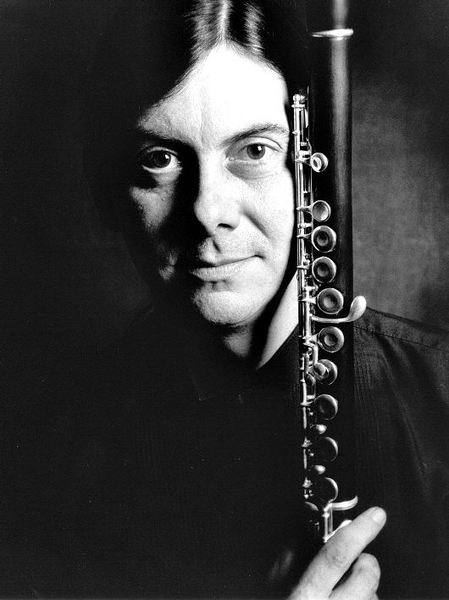Jazz Flute and Flautists
The flute player’s classic introduction to jazz is often at school, when their band teacher tosses a saxophone to them and says, “Try this! See you after-school in jazz!” Saxophone, especially alto or tenor, is an excellent second instrument for a flute player, as it has a very similar fingering system and written music range. Though jazz flute players aren’t uncommon, most that play in a jazz ensemble typically play saxophone for the majority of the time, and “double” on flute for a particular song or improvised solo. The most versatile of jazz saxophonists will be able to double on flute, clarinet, or even piccolo!
Playing in a jazz band is an incredibly beneficial experience, especially to your musical appreciation. Saxophone interferes little with the flute embouchure, and forces the student to learn to project their sound to a greater extent. Jazz contains different articulations and rhythms than more classical work; it’s a great way to make you more aware of the music you play. It’s a chance to both “let your hair down” in performance and more deeply analyze chord progressions. Your first time improvising a solo on the spot may be terrifying, but with practice you’ll become addicted to the experience - through improvisation, you can express yourself through your own music. It's like a really expressive cadenza, only better; in a jazz ensemble, you usually have an energetic horn and rhythm section supporting you!
And remember how great you thought it was to be a concert-pitch instrument, never having to transpose any pitch? Well, yeah, playing sax in Eb does require the odd transposition, but knowing how to transpose early on will save you grief later, especially as you become a more advanced flute performer.
Members of the Concert Flute family
From high to low, the members of the concert flute family include:
- Piccolo in C or D-flat
- Treble Flute in G
- Soprano Flute in Eb
- Concert flute (also called C flute, boehm flute, silver flute, or simply flute)
- Flûte d'amour (also called tenor flute) in B-flat or A
- Alto flute in G
- Bass flute in C
- Contra-alto flute in G
- Contrabass flute in C (also called octobass flute)
- Subcontrabass flute in G or C
- Double contrabass flute in C (also called octobass flute)
- Hyperbass flute in C (also spelled hyper-bass flute)
Each of the above instruments has its own range. The piccolo is an octave higher in pitch than the concert flute. Like the concert flute, it reads music in C, but sounds one octave higher. The alto flute is in the key of G, and extends the low register range of the flute to the G below middle C. Its highest note is a high G (4 ledger lines above the treble clef staff). The bass flute is an octave lower than the concert flute, and the contrabass flute is an octave lower than the bass flute.
Less commonly seen flutes include the treble flute in G, pitched one octave higher than the alto flute; the soprano flute, between the treble and concert; and the tenor flute or flûte d'amour in B flat or A, pitched between the concert and alto.
The lowest sizes (larger than the bass flute) have all been developed in the 20th century; these include the sub-bass flute is pitched in F, between the bass and contrabass; the subcontrabass flute (pitched in G or C), the contra-alto flute (pitched in G, one octave below the alto), and the double contrabass flute in C, one octave lower than the contrabass. The flute sizes other than the concert flute and piccolo are sometimes called harmony flutes.
Parents and new players - Your top flute questions
answered!
When looking for a new flute and researching the various
options, you can often be faced with flute jargon such
as E mechanism or split E, open or closed mechanism, C
or B footjoint options, headjoint over-cutting and
undercutting, silver-plated or silver, padding and
set-up…This guide should hopefully steer you through the
jargon and help you to be more informed when visiting
the music shop.
PDF File Parents Guide to First Flute
Oxford Flute
Summer School
13-18th August 06
Britsh Flute Society
British Flute Society Convention - Manchester
Royal Northern College of
Music - 17th – 20th August
Display of new Miyazawa, Sankyo, Mateki and Trevor J.
James flutes
Call 01228 670306 for more information
Jazz Flautists Links
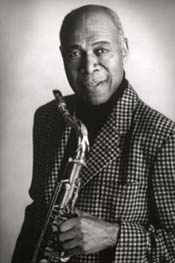 Buddy
Collette -
William Marcel Collette was born on
August 6, 1921 in the Watts district of Los Angeles.
Along with saxophonist Dexter Gordon bassist Charles
Mingus, and drummer Chico Hamilton, he helped keep bebop
alive in the city's historic Central Avenue
neighbourhood. Buddy also played an important role with
the development of the cool jazz movement. After
attending a concert by the legendary trumpeter Louis
Armstrong with his parents, a young Collette was taken
by the idea of a career in jazz. Satchmo's achievements
and lifestyle presented an appealing alternative to the
menial and often degrading jobs open to African
Americans during the Depression.
In 1933,
at the age of 12, Collette formed his first jazz
ensemble. The group contained, of all people, a talented
teenager named Charles Mingus, who Buddy convinced to
switch from cello to bass. Mingus was already an
extraordinary talent, but his infamous temper was also
firmly in place. In the years that followed, Collette
was instrumental in helping Mingus forge better
relationships with various musicians and producers.
Buddy's gentle, friendly demeanor was the perfect
counterpoint to the ornery bassist; they became lifelong
friends. In 1949, Collette recorded "It's April" in the
backroom studios of Dolphin's of Hollywood. Although
"It's April" and other tunes recorded at Dolphin's were
receiving radio airplay and selling well, studio owner
John Dolphin seldom paid the musicians. This money
conflict eventually led to the stabbing and killing of
Dolphin by one of his musicians. Buddy left Dolphin
behind and overcame tough racial barriers in the
industry by becoming the first African American to
perform in a television studio band, appearing on
Groucho Marx's television show, You Bet Your Life.
Buddy
Collette -
William Marcel Collette was born on
August 6, 1921 in the Watts district of Los Angeles.
Along with saxophonist Dexter Gordon bassist Charles
Mingus, and drummer Chico Hamilton, he helped keep bebop
alive in the city's historic Central Avenue
neighbourhood. Buddy also played an important role with
the development of the cool jazz movement. After
attending a concert by the legendary trumpeter Louis
Armstrong with his parents, a young Collette was taken
by the idea of a career in jazz. Satchmo's achievements
and lifestyle presented an appealing alternative to the
menial and often degrading jobs open to African
Americans during the Depression.
In 1933,
at the age of 12, Collette formed his first jazz
ensemble. The group contained, of all people, a talented
teenager named Charles Mingus, who Buddy convinced to
switch from cello to bass. Mingus was already an
extraordinary talent, but his infamous temper was also
firmly in place. In the years that followed, Collette
was instrumental in helping Mingus forge better
relationships with various musicians and producers.
Buddy's gentle, friendly demeanor was the perfect
counterpoint to the ornery bassist; they became lifelong
friends. In 1949, Collette recorded "It's April" in the
backroom studios of Dolphin's of Hollywood. Although
"It's April" and other tunes recorded at Dolphin's were
receiving radio airplay and selling well, studio owner
John Dolphin seldom paid the musicians. This money
conflict eventually led to the stabbing and killing of
Dolphin by one of his musicians. Buddy left Dolphin
behind and overcame tough racial barriers in the
industry by becoming the first African American to
perform in a television studio band, appearing on
Groucho Marx's television show, You Bet Your Life.
Fortunately, Collette was not content on being the only
black musician, he eventually became a political and
cultural activist in the battle against segregation in
the music industry, and the burgeoning influence of
McCarthyism. He also helped organize a concert and rally
protesting government repression of the legendary
African American singer, actor, and political activist
Paul Robeson. Collette's artistic and social activism
continued when he led a grassroots campaign to
desegregate the Los Angeles musician's union. Gerald
Wilson, Frank Sinatra, Nat "King" Cole, and saxophonist
Benny Carter were some of Collette's early supporters.
None of these activities got in the way of Collette's
music making. In 1955, he became a founding member of
drummer Chico Hamilton's legendary quintet. The unusual
quintet also featured pianist and cellist Fred Katz,
whom Collette calls "the first jazz cello player." A
year later, Collette recorded Man of Many Parts, his
first album as a bandleader. The album not only
demonstrated Collette's mastery on saxophone but also
his compositional talents. In the late 1950s, the
careers of Collette and his West Coast contemporaries
were taking off. But while most of them like Mingus,
Hamilton and saxophonists Eric Dolphy and Charles Lloyd
moved to New York for more lucrative gigs, Collette
stayed in Los Angeles. Although Collette didn't become a
household name like his friends, he did become a
noteworthy educator in the 1960s. His students included
such wonderful woodwind players as James Newton, Frank
Morgan, Sonny Criss, Eric Dolphy, and Charles Lloyd. In
1996, the Library of Congress commissioned Collette to
write and perform a special big band concert to
highlight his long career. For the concert Buddy brought
together some of his old musical mates from Los Angeles
including Jackie Kelson, Britt Woodman, and Chico
Hamilton. Today, Collette is receiving more recognition
than ever. Although he no longer performs due to a
stroke
in 1998, the gleaming beauty, immense
talent,
and gentle spirit of Collette remain intact and highly
influential
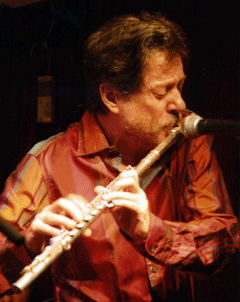
Shrek's Pied Piper =
Jeremy Steig
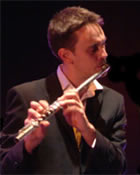 Gareth
Lockrane
Gareth
Lockrane
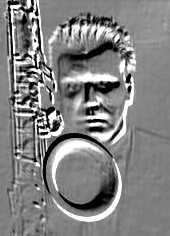 John
Burgess Website
John
Burgess Website
Lean, mean, flute machine
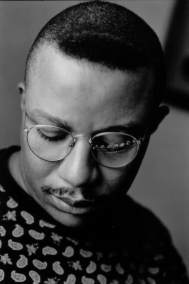 Rowland
Sutherland
Rowland
Sutherland
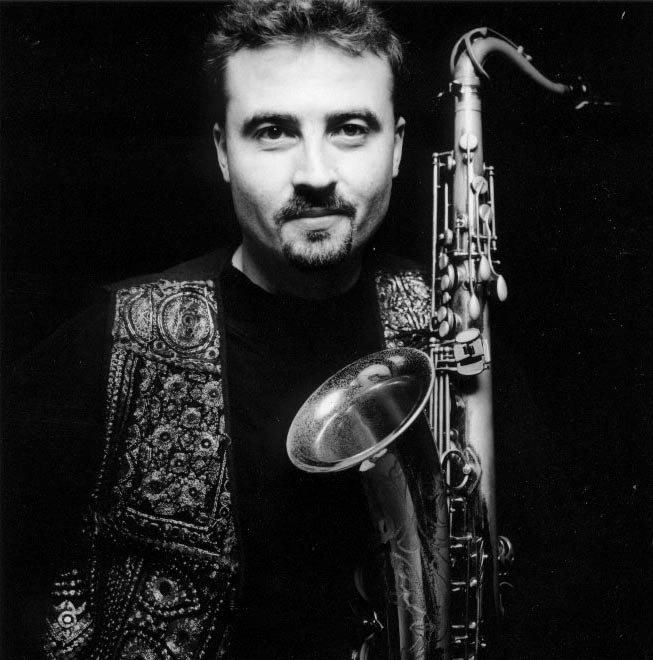 Tim
Garland
Tim
Garland
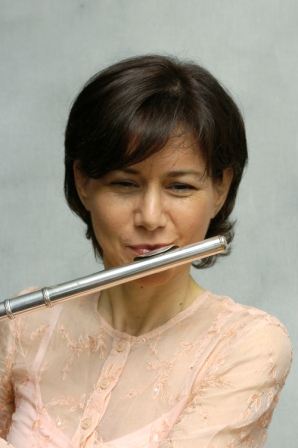 Jamie
Baum Website
Jamie
Baum Website
Jamie
-
NYC-based jazz flautist/composer; recording
artist/clinician
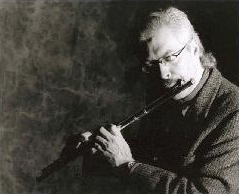 Bill
McBirnie is a
jazz and Latin flute specialist based in Toronto,
Ontario, Canada. He has studied with distinguished
Canadian flutist and composer, Robert Aitken, as well as
Cuban charanga legend, Richard Eques. Bill is known for
his superior technique on the entire family of
flutes—from bass flute to piccolo. He is also recognized
as an accomplished improviser, notably in the bebop,
swing and Latin idioms as demonstrated by his recordings
as a sideman with Junior Mance, Irakere, Memo Acevedo
and Cache
Bill
McBirnie is a
jazz and Latin flute specialist based in Toronto,
Ontario, Canada. He has studied with distinguished
Canadian flutist and composer, Robert Aitken, as well as
Cuban charanga legend, Richard Eques. Bill is known for
his superior technique on the entire family of
flutes—from bass flute to piccolo. He is also recognized
as an accomplished improviser, notably in the bebop,
swing and Latin idioms as demonstrated by his recordings
as a sideman with Junior Mance, Irakere, Memo Acevedo
and Cache
Bill McBirnie ( Extreme Flute)

/EileenHunter.jpg) Eileen
Hunter - Born in Aberdeen in the North East
of Scotland, Eileen grew up in a family steeped in
traditional music. Eileen began to play the
old upright piano in the living room at the age of
six. At home she had a great many influences from
Ella Fitzgerald, Louis Armstrong and many of the
jazz greats to classical music to the traditional
music which surrounded her. At the age of nine
Eileen took up the flute which was to be her main
instrument for the next fifteen years.
Although she had always sung for pleasure she did
not take it up seriously until she was a music
student at the Northern College in Aberdeen at the
age of eighteen. She went on to gain her LGSM
performer's diploma on flute and a B Ed (Mus) with
Honours, after which she was offered a music
teaching job in St Machar Academy where she stayed
for five years. About this time she also began
to develop as a jazz singer. In 1997 Eileen
left her home town to focus on her singing. She
studied jazz as a post graduate at the Leeds College
of Music supporting her studies by teaching and
gigging with her jazz band and retained her love of
jazz and the freedom of expression that it brings.
Eileen has finished recording her debut album Now
And Then. Her deep low register gives her a
versatility so she can move swiftly from her
delicate vulnerable ballads to sassy blues numbers
to cool laid back swing - and Blow flute..
Eileen
Hunter - Born in Aberdeen in the North East
of Scotland, Eileen grew up in a family steeped in
traditional music. Eileen began to play the
old upright piano in the living room at the age of
six. At home she had a great many influences from
Ella Fitzgerald, Louis Armstrong and many of the
jazz greats to classical music to the traditional
music which surrounded her. At the age of nine
Eileen took up the flute which was to be her main
instrument for the next fifteen years.
Although she had always sung for pleasure she did
not take it up seriously until she was a music
student at the Northern College in Aberdeen at the
age of eighteen. She went on to gain her LGSM
performer's diploma on flute and a B Ed (Mus) with
Honours, after which she was offered a music
teaching job in St Machar Academy where she stayed
for five years. About this time she also began
to develop as a jazz singer. In 1997 Eileen
left her home town to focus on her singing. She
studied jazz as a post graduate at the Leeds College
of Music supporting her studies by teaching and
gigging with her jazz band and retained her love of
jazz and the freedom of expression that it brings.
Eileen has finished recording her debut album Now
And Then. Her deep low register gives her a
versatility so she can move swiftly from her
delicate vulnerable ballads to sassy blues numbers
to cool laid back swing - and Blow flute..
'Eileen has it all...she
can soar into soprano range never losing her jazz
impact' - Tina May
Alex Dean
Reedman, Alex Dean, has
been described as "one of Canada's foremost Jazz
Saxophonists". He is also a fine flutist who has
been a mainstay of the Canadian music scene for many
years. He has played and recorded with Gil Evans,
Kenny Wheeler, Mel Torme, Aretha Franklin, Natalie
Cole, Harry Connick Jr., Ray Charles, Pat Labarbera,
Phil Nimmons, and the Toronto Symphony. Alex is a
member of Rob McConnell's "Tentet". He also holds
the tenor saxophone chair with Rob McConnell's BOSS
Brass and has the distinction of having recorded on
their last ten albums with Concord Records.
Vern
Dorge
Vern is one of the most
experienced and well-known multi-instrumentalists in
the Canadian music scene. He was born in Medicine
Hat, Alberta and moved to Toronto in 1974 to pursue
a music career. Vern not only performs on the
saxophones but also the other woodwinds including
flute. He works in television, theatre, studio
recording, orchestral, club and freelance work in
many different styles and genres. He has appeared
with such well-known soloists as Gordon Lightfoot,
Anne Murray, Rita McNeil, Bruce Cockburn, Hugh Marsh
and Blood, Sweat, and Tears.

Ned McGowan
orn in the
United States in 1970 and living in the Netherlands
since 1994, McGowan has built his career by
collaborating closely with ensembles such as the
Axyz Ensemble, Calefax, the Zephyr Quartet and
Hexnut. His taste for diversity emerged
already as a teenager who took classical flute
lessons, played jazz and listened to rock. After
finishing studies in flute at the San Francisco
Conservatory and the Cleveland Institute of Music,
he moved to Amsterdam to continue his research. Over
the course of eight years, he studied both flute and
composition in Amsterdam and The Hague, exploring a
wide range of subjects – from extended techniques to
Carnatic forms and rhythms, from jazz improvisation
to West-African drumming. His compositional voice
was profoundly influenced by these experiences, even
though he never directly follows any of these
traditions stylistically. Ned is also highly
active in fostering the Amsterdam musical community
through the Karnatic Lab Foundation, an organization
he founded with Gijs Levelt in 1999 to promote both
composed and improvised new music. This umbrella
organization runs a monthly concert series, programs
a yearly festival with international guests, and has
its own record label (Karnatic Lab Records) and
house ensembles: Axyz, a contemporary music
ensemble, Spinifex Orchestra, a nine piece jazz
ensemble, and McGowan’s own quintet, Hexnut.
Hexnut is his special group that grew out of the
original instrumentation for his piece Tools, plus a
singer. They are “a tribe of dedicated musicians who
perform the most fiendishly difficult rhythms with
flair and ease…” (Paris Atlantic). The band reflects
Ned’s affinity for the edgy, risky and yet extremely
precise – the embodiment of “brutal and humorous.”
It is a perfect example of the juxtaposition,
assimilation and contradiction of styles within
improvisation and composition that Ned is constantly
inventing. In Hexnut, Ned is often seen behind his
contrabass flute, which has become one of his
specialties. For his Carnegie Hall debut in April
2008, he performed his new concerto for contrabass
flute and orchestra, commissioned by the American
Composers Orchestra.
Flautist Bob Chadwick has carved a niche for himself by virtue of his ability to combine a strong technical sense using his classical training with a very creative approach to world music and jazz improvisation. Chadwick has an earthy yet focused sound on the instrument and grabs at musical ideas as quickly as they enter the room. Bob was classically trained with formal education from Miami University, Ohio (Music, Flute Performance degree) and post-graduate studies with full scholarship at Rice University Sheppard School of Music under Albert Tipton.
National Flute Association - USA
In jazz, flautists are a rarity. Seattle bred Anne Drummond transforms the flute’s sound and contemporizes its style with a fresh artistic outlook. Whether leading her quartet or performing alongside pianist Kenny Barron, vibraphonist Stefon Harris or bassist Avishai Cohen, Anne is an original voice both lyrical and powerful, subtle yet driving.
http://www.robertdick.net/index_content.html
http://www.alfanet.hu/kirk/index2.html
http://www.jimnewsom.com/HerbieMann.html
http://www.budshankalto.com/
http://www.bb10k.com/RIVERS.disc.html sam rivers
http://www.nikarejto.com/
http://www.lauradreyer.com/
http://www.althearene.com/
http://www.phoenixrisingmusic.com/ andrea
brachfeld
http://www.janebunnett.com/index2.htm
http://hpnewyork.com/music/musicians/FrankWess/Frank.html
http://www.kennystahl.com/
http://www.lewtabackin.com/
http://www.hubertlaws.com/index.htm
http://www.jazzfluteweinstein.com/ Mark
Weinstein
http://www.jamesmoody.com/
http://www.allaboutjazz.com/php/news.php?id=7826
Bill McBirnie
http://www.indiepool.com/newsite/showcase/biography.asp?id=15737
Bill McBirnie
http://www.redgoldmusic.com/ paul cheneour
http://www.joyofmusic.com/ bettine clemene
http://www.gillbolaget.se/woodwind/ Urban
Hansson
http://www.sherrywinston.com/
http://home.hetnet.nl/~johmar/index.html John
Devitt
http://www.matthias-ziegler.ch/english/aktuell/index.html
http://www.mkmjazz.com/ MAKANDA KEN McINTYRE
http://en.wikipedia.org/wiki/Eric_Dolphy Eric
Allen Dolphy
http://www.vervemusicgroup.com/artist.aspx?ob=per&src=prd&aid=4180
Joe Farrell
http://www.fantasma.com/artist_rep/artist-dave_valentine.html
Dave Valentin
http://www.aliryerson.com/

^Bass Flute
JAM - Jazz Appreciation Month - is every month of your year

